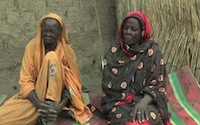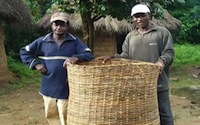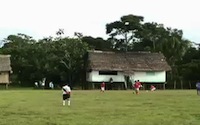Introductory notes
The DOBES archive contains audio and video recordings of endangered languages. It is important to understand the principles of access rights in the archive before using the archive. The recorded data is stored as sessions that usually consist of one or more media files and a description of the circumstances of the recording (metadata). Often, an annotation file is present as well where the researches have transcribed and translated what is said, sometimes with additional notes.
Each documentation project in the DoBeS framework has created their own subarchive which in turn has its own structure that usually sorts the sessions according to their topics. This is represented as a tree structure that can be browsed for a first impression.
Two different kinds of searches are possible in the DoBeS archive: The user can search the metadata descriptions (e.g. search for a language, a place of recording, etc.) or the annotations (search for a certain word and find all recordings where this word is included in the transcriptions).
Metadata search
For an exploration of the archive in terms of language of the session, location, participant or other information about the recording session, the metadata descriptions can be searched. By right-clicking on any corpus node (e.g. the top node of the DoBeS archive, the top node of a subproject or the top-node of a subbranch of any archive) and selecting “metadata search” a search can be performed over the metadata descriptions. This is by default an unstructured, google-type search but more complex queries can be entered xxx.
Sample search, links to short-guides…
Note that it is not always easy to search for a person, as many participants are anonymized in the archive. If you are searching for recordings of an anonymized person, it would be best to contact the project team for help.
Annotation search
For users who are more interested in finding instances of certain linguistic phenomena (e.g. ergative case), narratives or discussions pertaining to a certain topic (e.g. astronomy, the use of tobacco, …) which is not expected to be contained in the metadata description, it is possible to search the annotation content.
Similarly to the metadata search, the annotation search is accessed via a right-click on any corpus node. The annotation search can be unstructured or structured.xxx
Note however, that the depth and structure of annotation differs widely across projects and within projects across different sessions.
Sample search, links to short-guides…
See also: access methods, browsing







